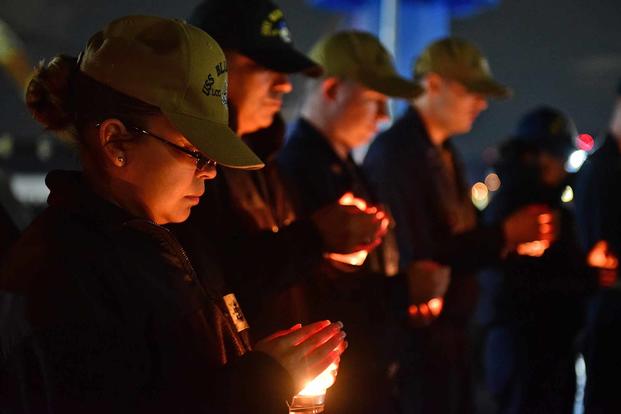Cole Lyle is the executive director of Mission Roll Call, former policy adviser in the U.S. Senate and U.S. Dept. of Veterans Affairs, and combat veteran of the U.S. Marine Corps.
Matthew Shuman is the former national legislative director for The American Legion and a veteran of the U.S. Army.
The opinions expressed in this op-ed are those of the author and do not necessarily reflect the views of Military.com. If you would like to submit your own commentary, please send your article to opinions@military.com for consideration.
Not long into the Global War on Terror, veteran and active-duty suicide accounted for more deaths than the battlefield. Data from the Department of Veterans Affairs (VA) suggests that 17 veterans a day take their own lives, or 6,205 per year. Due to the unreliability of collected data and skewed analysis, it is possible that the number is much higher. Regardless, one is too many.
Congress and veteran service organizations like The American Legion and Mission Roll Call have spent a lot of time and effort trying to save veteran lives. Since 2001, Congress has appropriated almost $200 billion for traditional approaches to mental health.
But a few years ago, lawmakers began to recognize that veteran suicide can't be stopped by relying solely on psychology and pharmacology, the key areas that have received funding to stem the epidemic. Since 2001, VA's budget has grown by $253 billion, but 114,000 veterans have died by suicide. That's enough people to fill Yankee Stadium, twice.
After nearly 20 years of funding traditional approaches, Congress recognized its efforts -- and by extension, the VA's -- were failing to prevent or slow the rate of veteran suicide. Congressman Mark Takano, chairman of the House Committee on Veterans' Affairs, penned an op-ed in 2019 admitting "we've failed to adequately address" this persistent crisis. Instead, our approach must be rooted in the communities that are affected most and empower them with the right tools for suicide prevention.
Thus, Congress passed the Commander John Scott Hannon Act, which included the Staff Sergeant Parker Gordon Fox Suicide Prevention Grant Program. This program supports community organizations, which have closer and more frequent contact with veterans than the VA does, to bolster veteran suicide prevention outreach.
In creating the grant program, Congress' intent was to redirect resources directly into communities where veterans and their families live.
The reality is, just like the demographics of America, veterans are different, and a one-size-fits-all approach does little to stem the tide of suicide. What might work for veterans in NYC or L.A. might not work for those living in rural Texas or Arizona, and vice versa.
Creating a grant program, where community organizations already working in the mental health and suicide prevention arena can apply to the VA for a grant up to $750,000, is just the type of thinking that might work.
Once the $174 million program is fully operational, VA will financially support organizations that help identify at-risk veterans, focus on education surrounding signs someone is considering suicide, case management, peer support services, clinical services for emergency treatment, and even nontraditional and innovative approaches and treatment approved by the department.
In short, Congress and VA realized they can't combat the pandemic of suicide alone and are now leveraging a three-year program to find out if engaging veterans in their local communities, with people like them, might help. But although the program was authorized and funded in 2020, the VA only recently announced application requirements and gave local organizations less than two months to apply for this fiscal year.
Veterans are 50 times more likely to take their lives when compared with civilians, and after 20 years of not trending downward, we applaud Congress for thinking out of the box and allowing others with real-world, hands-on solutions to engage our veterans where they live. Congress should provide more funding for the program going forward to facilitate more local partnerships, saving lives.















